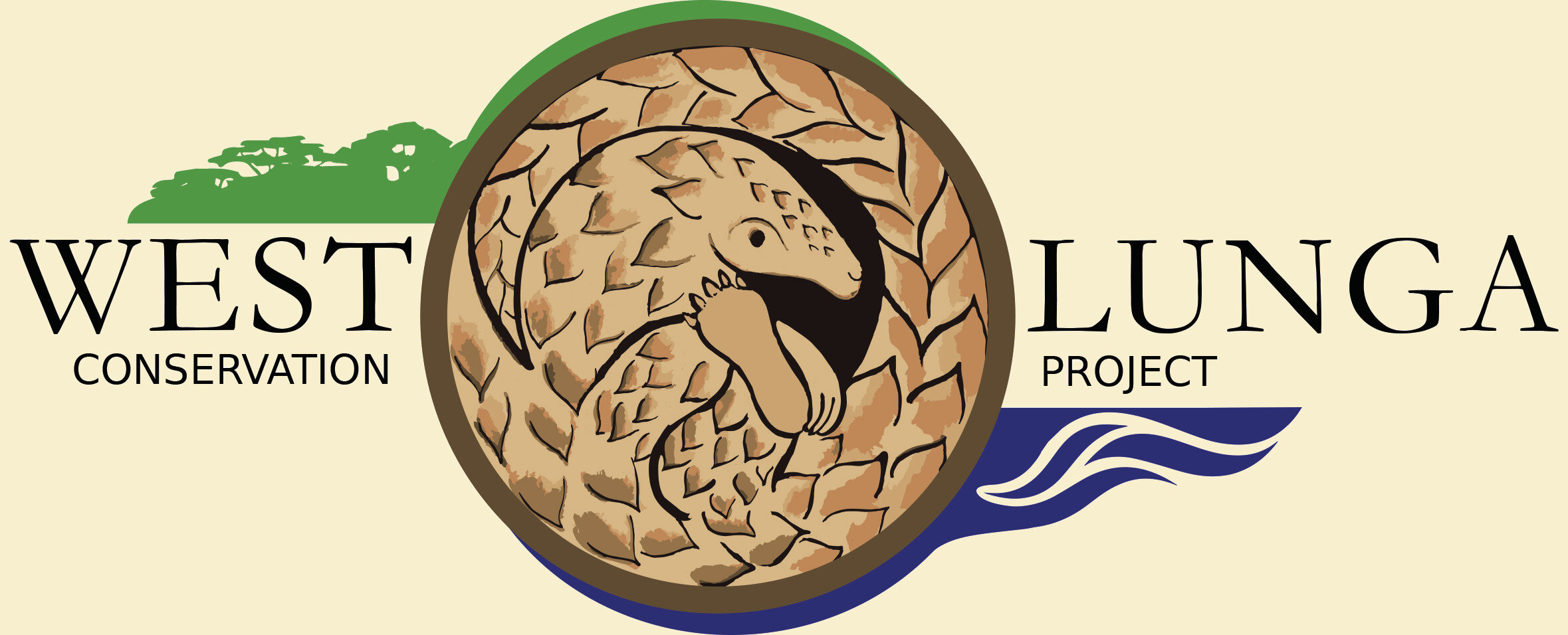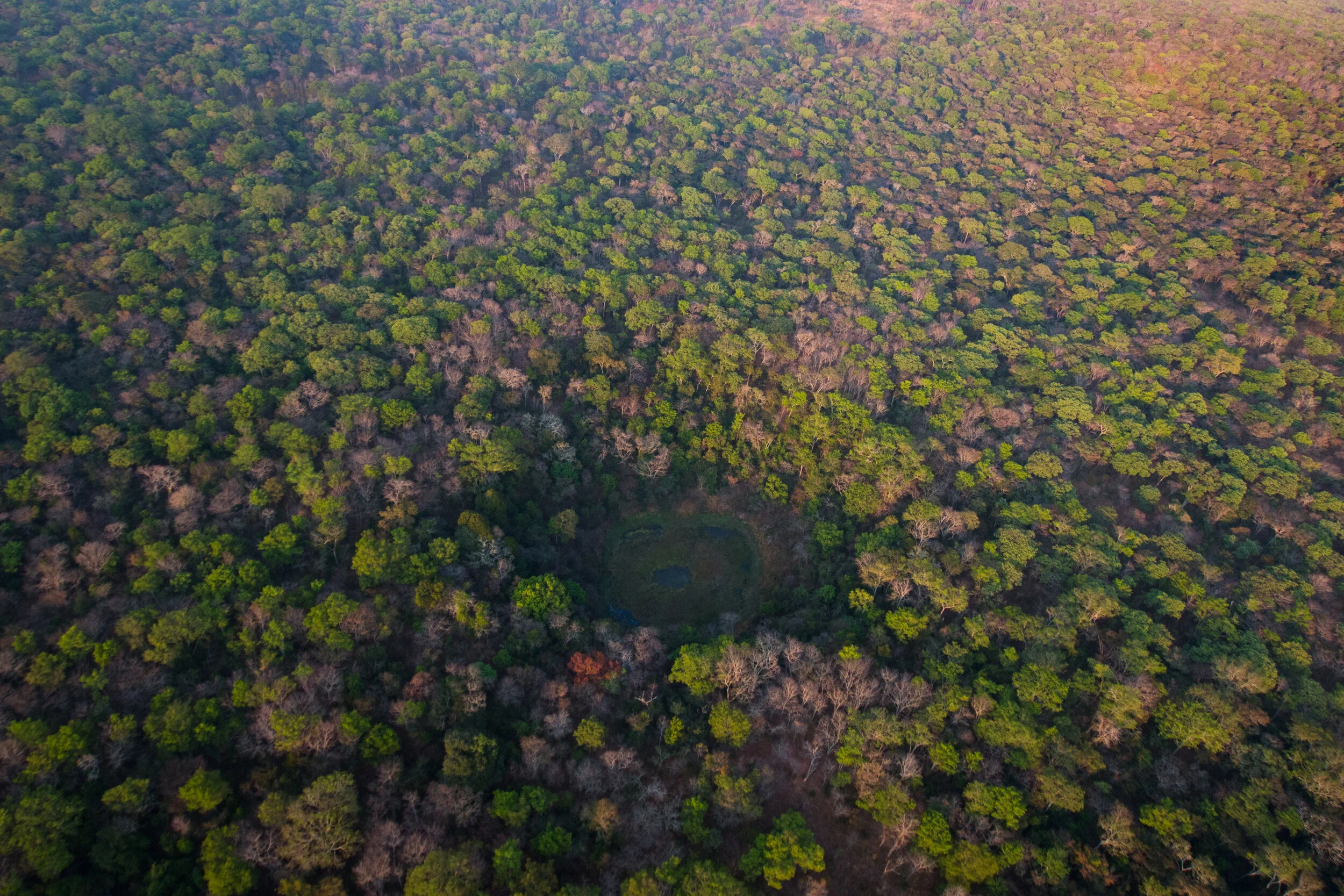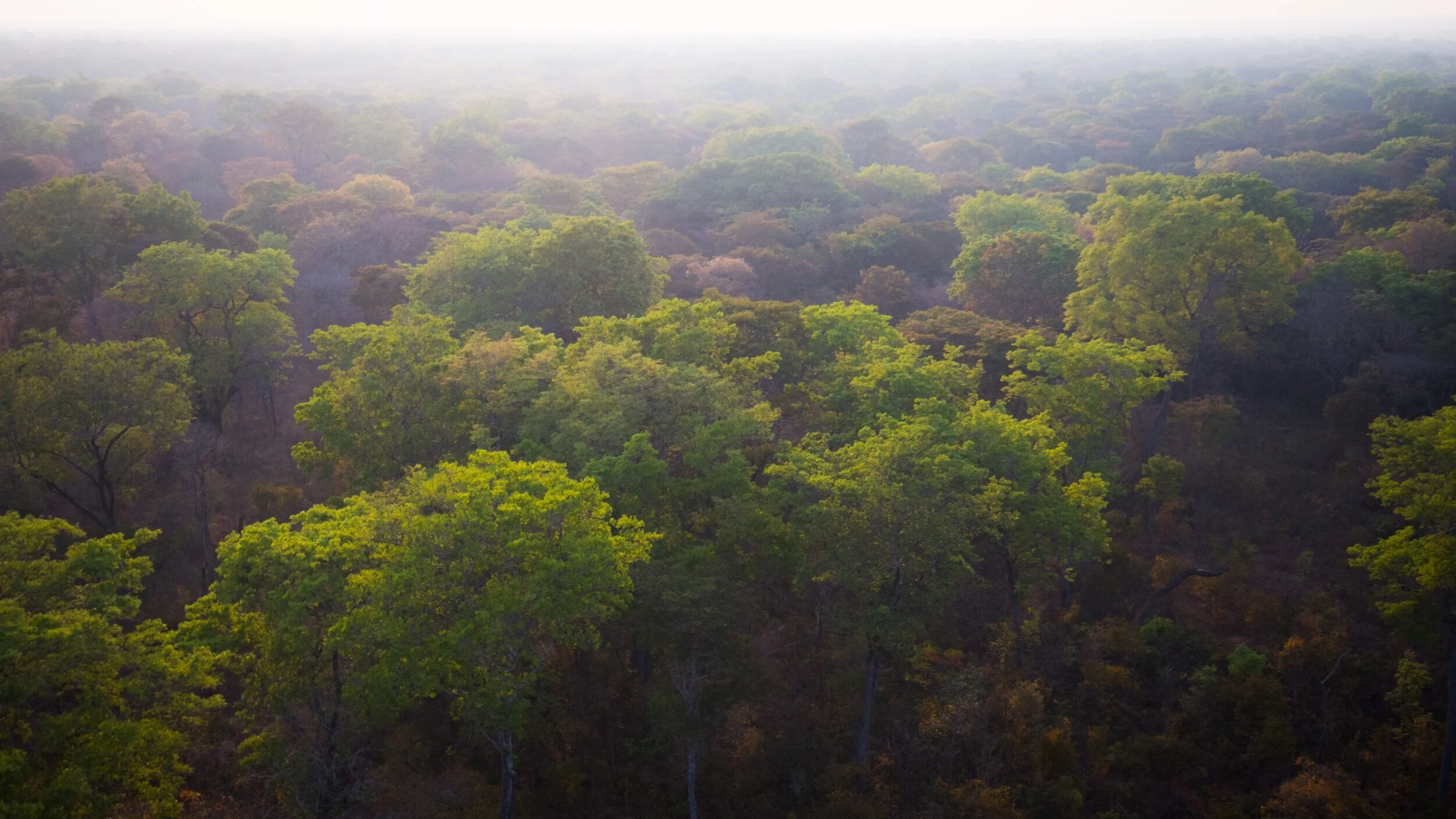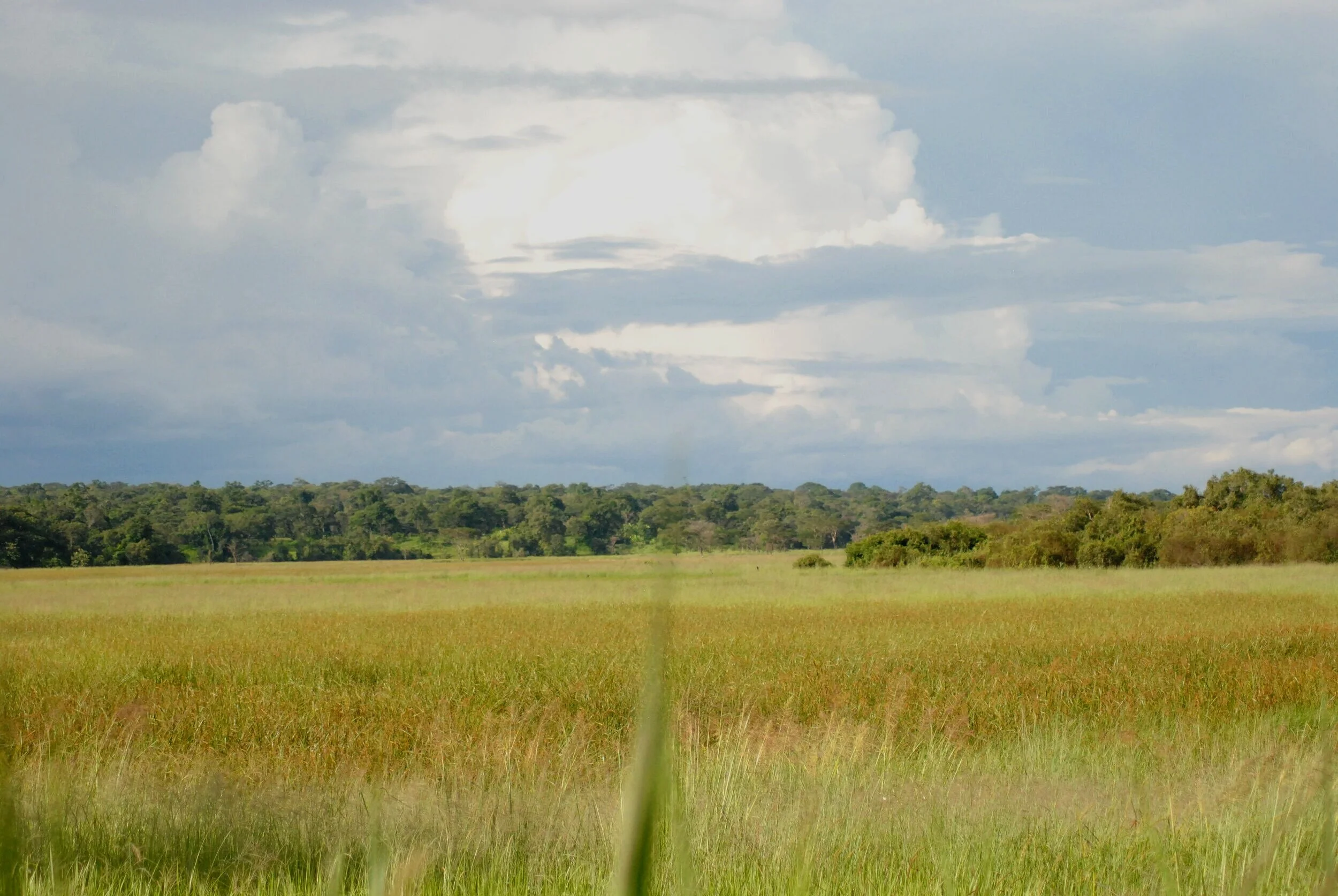The West Lunga ecosystem is characterised by some of the most unique ecological settings in Zambia. The dry evergreen Cryptosepalum forests (Mavunda) are endemic to this area and the mosaic of rivers and wetlands create unusual arrangements of riverine, floodplain and dambo habitats. West Lunga provides vital ecosystem services that demand attention and protection.
Mavunda (Cryptosepalum) Forest
Mavunda is a dense, evergreen forest type endemic to north-western Zambia and eastern Angola. Mavunda is a local term used to describe the understorey of shrubs, scramblers and climbers that form a dense thicket; the chief characteristic of dry-evergreen Cryptosepalum forests. Most large mammals (humans included) struggle to navigate through this thicket due to its complex tangles of vines and branches, though elephants are known to push their way deep into the forests and spend long periods of time within them. Mavunda woodlands are largely unexplored and we know very little about their interior. They stretch for thousands of square kilometres and provide vital services to the ecosystem as well as habitat to a multitude of wildlife species.
The West-Lunga and Kabompo Rivers
West Lunga National Park is defined on the east and south by the Kabompo River and on the west by the West Lunga River and their confluence forms the southwestern park boundary. The Kabompo catchment has been identified as a priority Water Resource Protection Area for Zambia in recognition of its water provisioning function for Zambia, the high aquatic ecological importance and sensitivity to use and human impact. Although the contributions are significant, little specific quantitative information exists at tributary level and any impact could have detrimental downstream effects. One thing is clear however, it is vital to maintaining the integrity of the Zambezi and therefore millions of people in Zambia depend on this waterway.
Termitaria
West Lunga National Park is home to an abundance of termite species. Thousands upon thousands of mounds stretch across the open grasslands and through the forests. Individual mounds have been found to date back over 800 years, having been inhabited by different colonies and even species during that time. Little is known about the effect that these colonies have on the ecosystems they inhabit, except that they exert a significant influence on plants, animals, and soils.
Rosewood Forests
Guibortia coleosperma or Rosewood is a slow growing hardwood species found growing in the sandy soils that characterise this region. It is widely sought after as a timber and veneer species. A recent increase in logging activity across Zambia's north-western province has brought the protection of Rosewood forests into the forefront. Rosewood may just indicate a single tree species, but its extraction affects a number of richly coloured timbers that grow together in tall, closed canopy forests.
Floodplains and Wetlands
West Lunga National Park is a mosaic of forest, floodplain, and grassland. Recent efforts to reduce fires across the landscape have resulted in a returning diversity of grassland plant species. These areas play important roles in our global ecosystem by sequestering atmospheric carbon, regulating the flow and reducing sedimentation of rivers, and of course supporting a great diversity of fauna.







